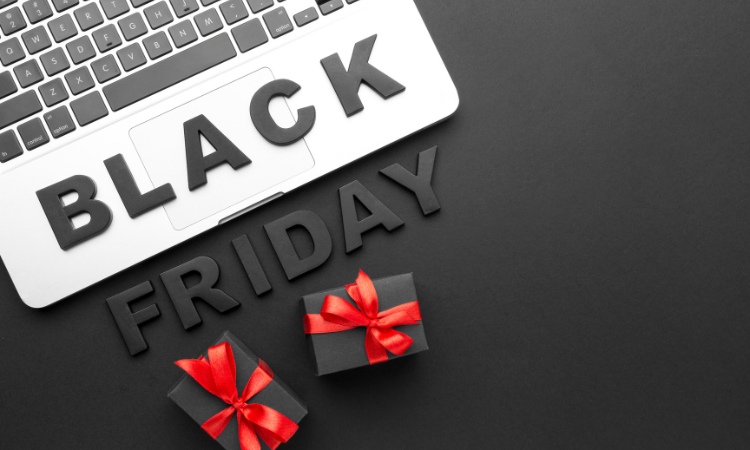All users are diverse, and so are their needs, expectations and behavior. And it is necessary to understand what your users with different needs and choices want and expect from your product. Without understanding properly about this, all your efforts, be it marketing efforts or product development efforts, can go in vain if most of your users don’t like your product.
Here comes the need for User Segmentation. User Segmentation helps you recognize the needs and expectations of the users of various types or categories, and provide them personalized experiences. Whether you send your users a survey, or market them your plans and offers, it is necessary to do so according to their choice, behavior and product usage.
In this article, we will explore User Segmentation, its types, importance, and how you can implement User Segmentation and use different surveys to collect Product Feedback for different groups of users. Let’s get started!
Measure Product Feedback & User Insights 💻
With Product Feedback Surveys, understand what users need and learn ways to delight your customers.

What is User Segmentation?
User Segmentation is the process of dividing the users into various categories or groups based on their shared characteristics and behavior. The idea behind User Segmentation is to analyze the different groups and identify opportunities to improve your product and at the same time provide personalized experiences to the product users.
Product users can be grouped on the basis of various aspects. It may be user personas, product usage, the stage or touchpoint of the user journey they are into, and various other factors of differentiation. Let’s understand this better by exploring the types of User Segmentation.
Types of User Segmentation
- Demographic Segmentation
- Firmographic Segmentation
- Technographic Segmentation
- Behavioral Segmentation
- Psychographic Segmentation
- Segmentation based on Customer data
Let’s learn about all these types of User Segmentation:
1. Demographic Segmentation
There are certain demographic factors that affect the needs and choice of the users. These factors can be:
- Age
- Country
- Ethnicity
- Gender
- Income
- Education Level
Demographic Segmentation is done on the basis of the information collected about these aspects of the users so that users of similar demographic backgrounds can be put together in groups and are offered product features and services accordingly.
2. Firmographic Segmentation
When we talk about using a product, especially for B2B clients, it is necessary to collect firmographic information i.e. the information about their firm. Firmographic factors play an important role for the users in choosing the type of product. These factors are:
- Industry
- Employee Count
- Business Model
- Annual Revenue
- Company size
- Company budget
- Job titles of the users
- Experience of the users
Whether they are individual users or companies, it is important to collect their firmographic information to be able to put them in the right segment and offer them the right product and plans.
3. Technographic Segmentation
Technographic factors means technological aspects and choices of the users. For offering the right product and features to the users, it is crucial to know what technology your users use and prefer so that you can make product changes or offers accordingly. These factors can be both for the individual users as well as enterprises. These technological factors can be:
- Usage Rate
- Type of Technology used
- Devices used in a company
- Device and model used by the user
- Company CRM and Automation Tools
- Integration Platforms used by the company
4. Behavioral Segmentation
To put the users in the right segments and offer them the right product features and plans, it is crucial to know and analyze user behavior. This means the information that is based on the analysis of how the user uses your product. The various aspects of user behavior to be considered are:
- Usage frequency
- Login time
- Number of logins
- Support tickets created
- Features clicks, used, and requested
5. Psychographic Segmentation
Psychographic Segmentation is done on the basis of the information regarding the users psychology and personal choice, preferences, and priorities. It is more of the qualitative traits of the users. In this segmentation, the users are categorized based on their attributes like:
- Likes and dislikes
- Opinions and beliefs
- Lifestyle
- Interests
- Product Sentiment
You can use metrics like Net Promoter Score and Customer Satisfaction Score to know what your users like or dislike, and recommend to their friends and family, and what they don’t like about a product.
6. Segmentation based on Customer data
You can also do segmentation based on the customer data saved in your CRM. This data gives you the information about your users, and their relationship with your product. This information will include:
- Plan type chosen by the user
- User journey stage
- Account owner
- Plan renewable data
Now, let’s explore how and why User Segmentation is important to make your product successful.
Why is User Segmentation Important?
All people are unique in their choices and preferences and so are their needs and requirements with your product. In such a diverse audience, it becomes almost impossible to satisfy a large user base with just one set of product features and plans.
User Segmentation helps you understand your user base and put them in the right category thus offering them the right product with appropriate features and plans that suit them. For instance, some users want a product with high speed and price doesn’t matter much to them. You can offer such users a high-speed variant of your product with a higher price. Whereas, some users can go with limited speed with a limited budget. In such a case, you can offer them product variants with low speed at a lower price.
Understanding your user base helps you deliver what they exactly want and provide the best user experiences. Here are some benefits of User Segmentation to understand this better.
1. Deliver Personalized Experiences
User Segmentation helps you modify your product according to the customers’ needs and offer various plans. It helps you deliver tailored experiences as per their requirements and ensure better User Satisfaction.
2. Understand users better
User Segmentation helps you understand your users better about their needs, requirements, choices, preferences, and how to satisfy them.
3. Ensure Better Retention
When you deliver personalized experiences to your users and ensure User Satisfaction, it helps to increase user loyalty and develop a long lasting relationship with them. This helps to prevent churn and ensure better retention.
How to Implement and Utilize User Segmentation?
For implementing User Segmentation, you need to collect information about the user requirements, needs, choices and behavior. When you understand all this properly, you can easily implement User Segmentation and develop products that your users love. Here are the ways to do so.
Ways to Implement User Segmentation
- Collect Product Feedback
- Define User Groups
- Analyze User Behavior
- Use NPS Surveys
- Send Different Surveys to Different Segments
Let’s learn how you can use these ways to implement User Segmentation:
1. Collect Product Feedback
Product Feedback is a great way to understand your users and know better about their needs and expectations. Collecting product Feedback helps you know what your diverse customers want, like, dislike, and what they perceive as an ideal product.
By using a good Product Feedback Tool, you can easily create Product Feedback Surveys and share with your users via various channels and collect valuable information about their needs, preferences, and expectations with your product. You can analyze the survey results and group your customers into various segments as per their responses.
2. Define User Groups
You can define user groups based on the stage or touchpoint of the user journey on which your users are. You can use these groups or segments for your marketing campaigns and for targeting the right group of users.
For instance, you can create different groups of trial users who got converted and for those who didn’t get converted. Similarly, you can create a segment of the users who are using your product for more than a couple of years so that you can offer them more long-term plans with loyalty benefits.
3. Analyze User Behavior
Another way is to analyze the behavior of your users by looking into how they use your product. For this, you can use customer usage data stored in your CRM and see how different user segments use your product in various ways. By analyzing product usage, you can make different offers to your product users based on their needs and usage.
4. Use NPS Surveys
NPS or Net Promoter Score Surveys are a great way to divide your customers into different groups based on how they perceive your product. You can use a good Product Feedback Tool to create and share NPS surveys with your users to measure customer loyalty and satisfaction with your product. An NPS Survey simply asks how willing your users are to recommend your product to their friends and known ones on a rate of 0 to 10.
Respondents of these surveys are divided into three segments viz., Promoters (who rated 9-10), Passives (who rated 7-8), and Detractors (who rated 0-6). You can then deal with all these three segments in different ways and satisfy them to prevent churn and enhance user loyalty.
5. Send Different Surveys to Different Segments
When you have created segments of your product users on the basis of various aspects and attributes, you can send them different surveys appropriate for the respective segments. In this way, you will be able to ask the most appropriate Product Feedback Questions to your users and give the opportunity to your users to share their feelings about your product.
Let’s understand this better with some examples of surveys that you can use for various segments of customers.
Surveys Used for Various Customer Segments
You can use an effective Product Feedback Software to create surveys of different types for different segments of users. A good Product Feedback tool provides you ready-to-use survey templates that you can use at various touchpoints of user journey and for different segments of users. Here are some examples of different stages of user journey and the surveys to be used according to them.
1. Free Trial Users - Free Trial Survey
You can send a Free Trial Survey to your Free Trial Users to know how they feel about their experience with your product during the free trial. You can send these surveys around 3-4 days after the user starts using the free trial. This will help you know the concerns and expectations of the users and you can improve their experience before the trail ends. This will help in conversion of those users.
2. Existing Users - Relationship Surveys
You can send Relationship Surveys to your existing users to track how your relationship with the users are going. Relationship Surveys are periodic surveys that you can send from time to time to ensure a smooth relationship with your customers and know at the right time if they are facing any difficulty or concern, or are thinking of switching to another product.
In this way, you can also take action on feedback at the right time and prevent user churn.
3. New Users - Onboarding Surveys
Onboarding process leaves a lasting impression on your product users. So it is crucial to ensure a smooth onboarding of your customers. For your new users who are going through the Onboarding process or have just completed the stage of onboarding, you can send Onboarding Surveys to collect feedback about your onboarding process and improve it if required.
4. Users engaged with a core Feature - Feature Feedback Surveys
To the users who are engaged with a particular feature, you can send Feature Feedback Surveys that will help you know whether your users are satisfied with the feature or not. With the information collected through these surveys, you can improve your product features and make it more useful for your users.
5. Promoters and Happy Customers - Review Requests
You can send Review Requests to your promoters or happy customers to request them to leave a review on aggregator platforms like G2, Capterra, and GetApp. This helps increase the goodwill of your product in the market and attract more users to your product.
6. Unhappy or Churning Customers - Customer Retention Surveys
You can send Retention surveys to your unhappy customers or detractors which ask them the reason for dissatisfaction. The responses to these surveys will let you know the shortcomings of your product, and what your users don't like about your product. This will help you improve your product with Product Feedback and as per user demands and develop products that best satisfy your users.




.png)






